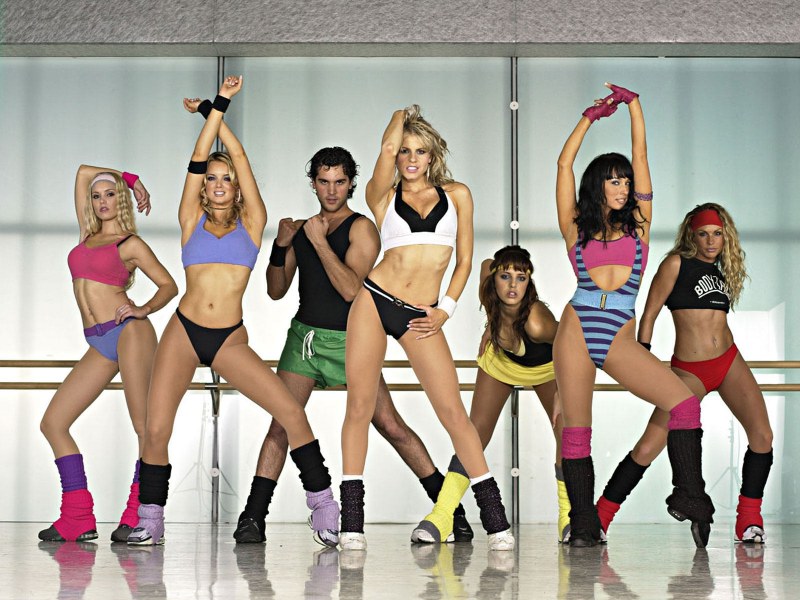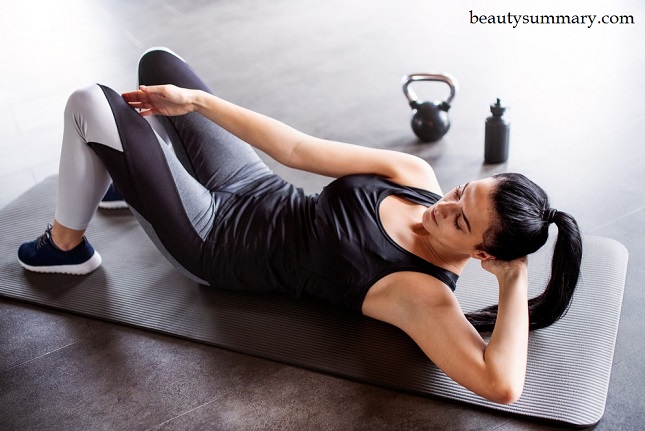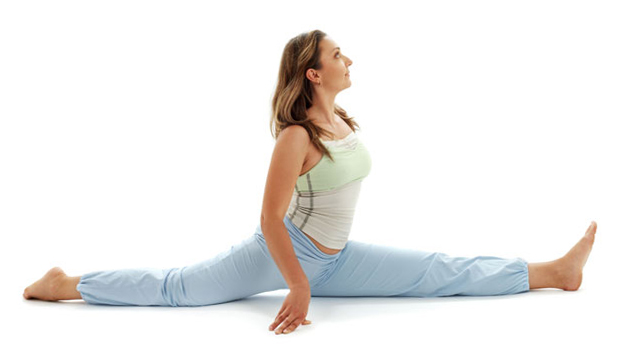Content
- Classical aerobics – a brief history
- Basic steps in classic aerobics
- Steps without changing the leading leg
- Steps with Leading Leg Change
- Conclusion
This article is devoted to the study of the basic elements of classical aerobics. It describes the technique for performing basic steps (with an expansion in a row), as well as their English names, which are sometimes so difficult to hear from the mouth of the coach. Once you master the basic steps in aerobics, you can safely move on to more complex choreography.

More complex choreography is formed from the basic movements.
Classical aerobics – a brief history
Content
- Classical aerobics – a brief history
- Basic steps in classic aerobics
- Steps without changing the leading leg
- Steps with Leading Leg Change
- Conclusion
The ancestor of classical aerobics is an American, Air Force Colonel and MD, Kenneth Cooper. It was he who first introduced the term “aerobics” in 1968 and published his first book of the same name.
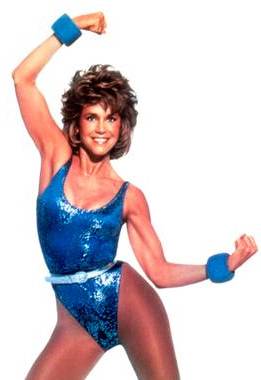
Jane Fonda made aerobics popular.
The spread of the ideas of Dr. Cooper, who worked mainly for the U.S. Air Force, owes the world a Hollywood actress and model Jane Fonda. In the late 70s, based on Cooper’s books, she developed a system of aerobic exercises performed to rhythmic music. Also, having published her findings, she released a series of video cassettes with simple and understandable instructions for everyone..
Now it’s hard to imagine a fitness club where at least 2-3 aerobic or “cardio” directions (basic aerobics, step aerobics, dance aerobics, aerobics with kick-boxing elements, etc.) would not be presented. All these areas were invented by processing and modifying the basic steps of classical aerobics..
Basic steps in classic aerobics
All steps in classical aerobics are performed in time with the music in 2 or 4 counts. Bundles of steps of 8 (8 accounts is a musical phrase), 16 or 32 accounts (32 accounts is a musical square). A professional trainer must say the names of the steps aloud (gives verbal commands), and also shows some steps, their direction and number of gestures.
Basic movements in aerobics are the foundation for building more complex choreographic compositions. Aerobics can vary in degree of intensity of exercise, as well as in shock load on the joints.
Below I will provide descriptions of the classic basic steps of aerobics. In fact, there are much more variations of steps, but, of course, in order to learn to read, you first need to learn the alphabet. If this is your first time planning to attend an aerobics training, or just want to better understand the basics, this instruction is for you.
In aerobics, there are 2 types of steps:
- Steps that do not change the leading leg. Leading is the foot with which you begin to move. No matter how many steps you take from this group, you will start every next step with the same foot.
- Steps that change the leg. Each next step you will start with a different leg.
All steps are performed on 2 or 4 accounts (music beat).
Steps without changing the leading leg
In parentheses indicate the number of accounts for which this step is performed..
March (4)
This is a simple step in place. It is carried out on 4 accounts.
- one foot step in place
- step with the other foot in place
- first foot step in place
- step with the second foot in place
Mambo (4)
This step is a variation of the “march” step, with the leading leg carried forward first, then back.
- one step forward
- step with the second foot in place
- step first foot back
- step with the second foot in place
The mambo step can also be performed in a diagonal direction. In this case:
- step one forward diagonally (if we start to walk with the right foot, we move it forward to the left, if left – forward to the right)
- step with the second foot in place
- step with your first foot back (since on the first count we turned the case diagonally, we just take this step back, it will automatically turn into a diagonal)
- step with the second foot in place
V-step (4)
This step is named so because of the similarity of the pattern that we walk on the floor with the Latin letter “V”.
- step one foot forward to the side (if we start from the right foot – step forward to the right, if from the left – forward to the left)
- step second foot forward to the other side
- return the first leg to the place
- step second foot into place
Cross (4)
This is the most difficult step for beginners without changing their legs. It is called “cross” because it involves crossing the legs..
- step one forward crosswise (if we start to walk with the right foot, we move it forward to the left, if with the left – forward to the right, the body looks straight ahead, unlike the mambo-diagonal step, the legs are crossed)
- step back with the second foot (right – to the right, left – to the left)
- return the first leg to its original position
- substitute the second leg to the first
Steps with Leading Leg Change
Step-touch (2) *
This is an ordinary step. Steps into two accounts, as a rule (not always), are made at least two. Those. step one way and step the other way.
- one foot step to the side
- put the second leg to the first (the next step we start with the same leg and step in the other direction)
We go to the second step with the leg that the previous step completed.
Double Step-touch (2 + 2)
These are two attached steps that are made in one direction (with one foot).
- one foot step to the side
- put the second foot to the first
- another step with the first foot in the same direction
- put the second foot to the first
Step-tap (2) *
This is the so-called touch step..
- one foot step to the side
- the second foot to touch the floor in front of the first foot
Chasse (2)
Another option step step. This step has a so-called “broken” rhythm. It is necessary to make three movements in two counts. One – this is one account, “and-two” – this is the second account, on which you need to perform two faster movements.
- one foot step to the side
- put the second foot to the first and step with the first foot in place
Step-lift (2) *
- front
- back
- side
The step at which in a certain direction a straight leg is taken out (done with a max leg).
- one foot step to the side
- with the second foot we swing in the right direction (front – forward, side – to the side, back – back)
Step-kick (2) *
The name of the step translates literally as “kick”.
- one foot step to the side
- bend the second leg forward in front of the first knee (do a kick)
Step-curl (2) *
This step is an overwhelming.
- one foot step to the side
- bend the second leg back at the knee
Step-plie (2) *
In other words, squat.
- one foot step to the side
- we straighten the second leg, not tearing off the floor, at the same time we squat on the first leg
Step-lunge (2) *
- step one foot forward, weight transfer to that leg
- with the toe of the second leg touching the floor at the back
Step-knee (2) *
- one foot step to the side
- bend the second leg at the knee
Knee-up (4)
Variation of the “knee” step into 4 accounts.
- step one foot forward (or forward in the opposite direction: if we step right, then forward left, if left, then forward right)
- bend the second leg at the knee
- return the second leg to its original position
- return the first leg to its original position
Grape-wine (4)
Step with the poetic name “grape wine.” Performed based on the “double step-touch” step.
- one foot step to the side
- put the second leg crosswise behind the first
- first foot one step to the side
- substitute the second leg to the first leg
Repeat
This is not a specific step, but a team urging you to repeat one step several times. So, for example, the phrase “Repeat 2 knee” means that you need to make the “knee” step two times in one direction two times. In the layout of the account, it will look like this:
- one foot step to the side
- bend the second leg at the knee
- return the second leg to its original position
- bend the second leg at the knee
* – these steps have the so-called “reverse steps.” Let me explain what this means. All steps marked with an asterisk in the layout for movements are first a step with one foot, and then some action with the other foot. So, for example, step-kiсk is a step-kick. In the case of reverse steps, these actions are reversed. Those. first a “kick” is made, and then a “step”. The reverse steps are called, respectively: “kick-step, curl-step, etc.”. The reverse steps are used infrequently by trainers, but nevertheless, one should not forget about their existence. The number of accounts to which the reverse step is performed is exactly the same as that of the direct step.
Conclusion
All of the above steps are basic in classical aerobics..
Aerobics is recommended in comfortable athletic shoes with a thick sole to compensate for the load on the joints and spine. Refrain from attending aerobics classes in Czechs, socks or slippers.
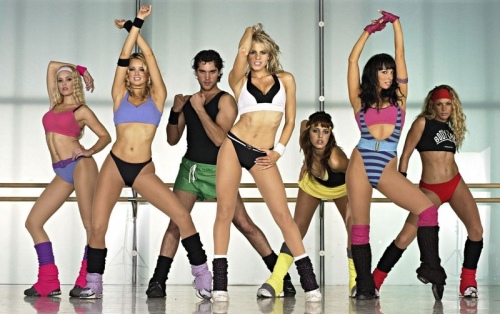
All movements in aerobics are based on basic steps and their modifications..
I hope that this information will help you master this fitness area and get even more pleasure from each lesson.!






